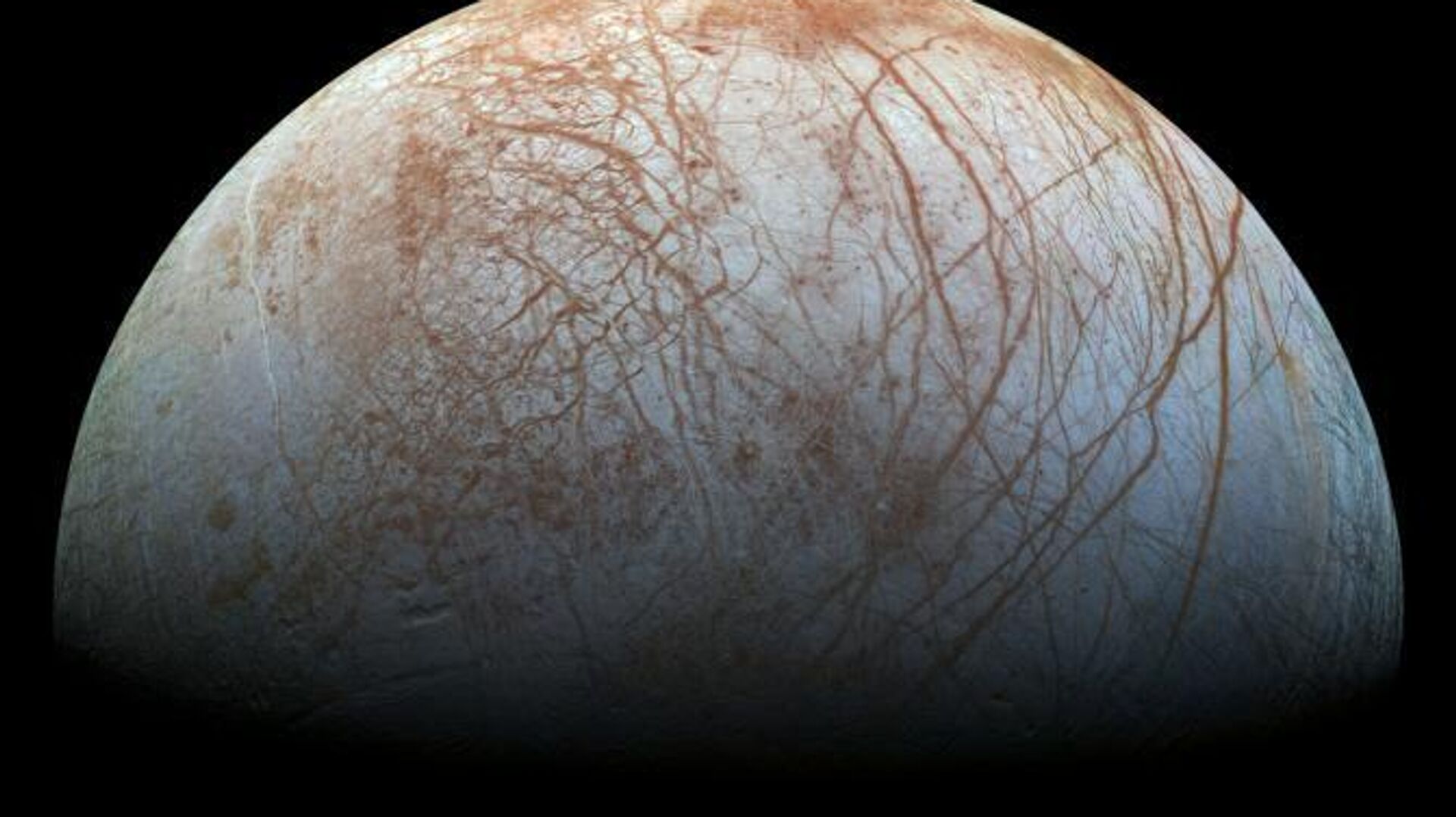https://sputnikglobe.com/20221217/comet-strike-might-have-brought-life-to-europa-1105542351.html
Comet Strike Might Have Brought Life to Europa
Comet Strike Might Have Brought Life to Europa
Sputnik International
Europa is the sixth most distant satellite of Jupiter. It was discovered in 1610 by Galileo Galilei. A new study suggests that life may exist on it. 17.12.2022, Sputnik International
2022-12-17T09:40+0000
2022-12-17T09:40+0000
2022-12-17T09:40+0000
science & tech
europa
jupiter
comet
discovery
https://cdn1.img.sputnikglobe.com/img/07e6/03/1a/1094222738_0:60:671:437_1920x0_80_0_0_0b2ad9c3059451c256810f0650eb0b27.jpg
The impact of comets and asteroids on Jupiter's natural satellite, Europa, could have transported the critical ingredients for life found on Europa's surface to its hidden ocean of liquid water. A new study showed this was possible even if the meteor didn't pierce the gas giant's icy moon shell.This is the conclusion reached by the authors of a new experiment conducted by researchers at The University of Texas at Austin. Scientists have developed a computer model to understand what happens on Europa after a comet or an asteroid hits the icy shell of the moon. Its cover is estimated to be 15-25 kms thick.According to the findings, if the impact is strong enough to allow particles from a comet or an asteroid to reach a depth of 5 km, heated meltwater will sink through the rest of the ice. This would allow various oxidizing agents, a class of chemicals essential for life, to enter the ocean from the surface of the moon. There, they can support any potential life in the sheltered waters.At the moment, impacts from comets and asteroids are thought to be one of the most likely mechanisms for the origin of life on Europa. Scientists have already discovered dozens of craters on its surface, many of them undulating, suggesting frozen meltwater and postimpact motion beneath the crater.In July 2013 an updated concept for a flyby Europa mission called Europa Clipper was presented. NASA accepted development of this mission in 2015. The aim of Europa Clipper is to explore Europa in order to investigate its habitability, and to aid in selecting sites for a future lander.
Sputnik International
feedback@sputniknews.com
+74956456601
MIA „Rossiya Segodnya“
2022
News
en_EN
Sputnik International
feedback@sputniknews.com
+74956456601
MIA „Rossiya Segodnya“
Sputnik International
feedback@sputniknews.com
+74956456601
MIA „Rossiya Segodnya“
how life appeared on europa, comet brought life on europa theory, water on jupiter's europa brought life how, is there life on europa,
how life appeared on europa, comet brought life on europa theory, water on jupiter's europa brought life how, is there life on europa,
Comet Strike Might Have Brought Life to Europa
Europa is the sixth most distant satellite of Jupiter. It was discovered in 1610 by Galileo Galilei. A new study suggests that life may exist on it.
The impact of comets and asteroids on Jupiter's natural satellite, Europa, could have transported the critical ingredients for life found on Europa's surface to its hidden ocean of liquid water. A new study showed this was possible even if the meteor didn't pierce the gas giant's icy moon shell.
This is the conclusion reached by the authors of a new experiment conducted by researchers at The University of Texas at Austin. Scientists have developed a computer model to understand what happens on Europa after a comet or an asteroid hits the icy shell of the moon. Its cover is estimated to be 15-25 kms thick.
According to the findings, if the impact is strong enough to allow particles from a comet or an asteroid to reach a depth of 5 km, heated meltwater will sink through the rest of the ice. This would allow various oxidizing agents, a class of chemicals essential for life, to enter the ocean from the surface of the moon. There, they can support any potential life in the sheltered waters.
At the moment, impacts from comets and asteroids are thought to be one of the most likely mechanisms for the origin of life on Europa. Scientists have already discovered dozens of craters on its surface, many of them undulating, suggesting frozen meltwater and postimpact motion beneath the crater.
"This study shows foundering of impact melts is a viable, robust, and likely widespread transport mechanism for surface materials to the ocean of Europa," stated the scientists in the article. "While this study has focused on Europa, the viscous foundering of impact melts to the ocean occurs for all ice shell thickness and ice viscosities explored here, and is therefore likely to occur on other icy worlds similar to Europa, for example, on Titan."
In July 2013 an updated concept for a flyby Europa mission called Europa Clipper was presented. NASA accepted development of this mission in 2015. The aim of Europa Clipper is to explore Europa in order to investigate its habitability, and to aid in selecting sites for a future lander.

